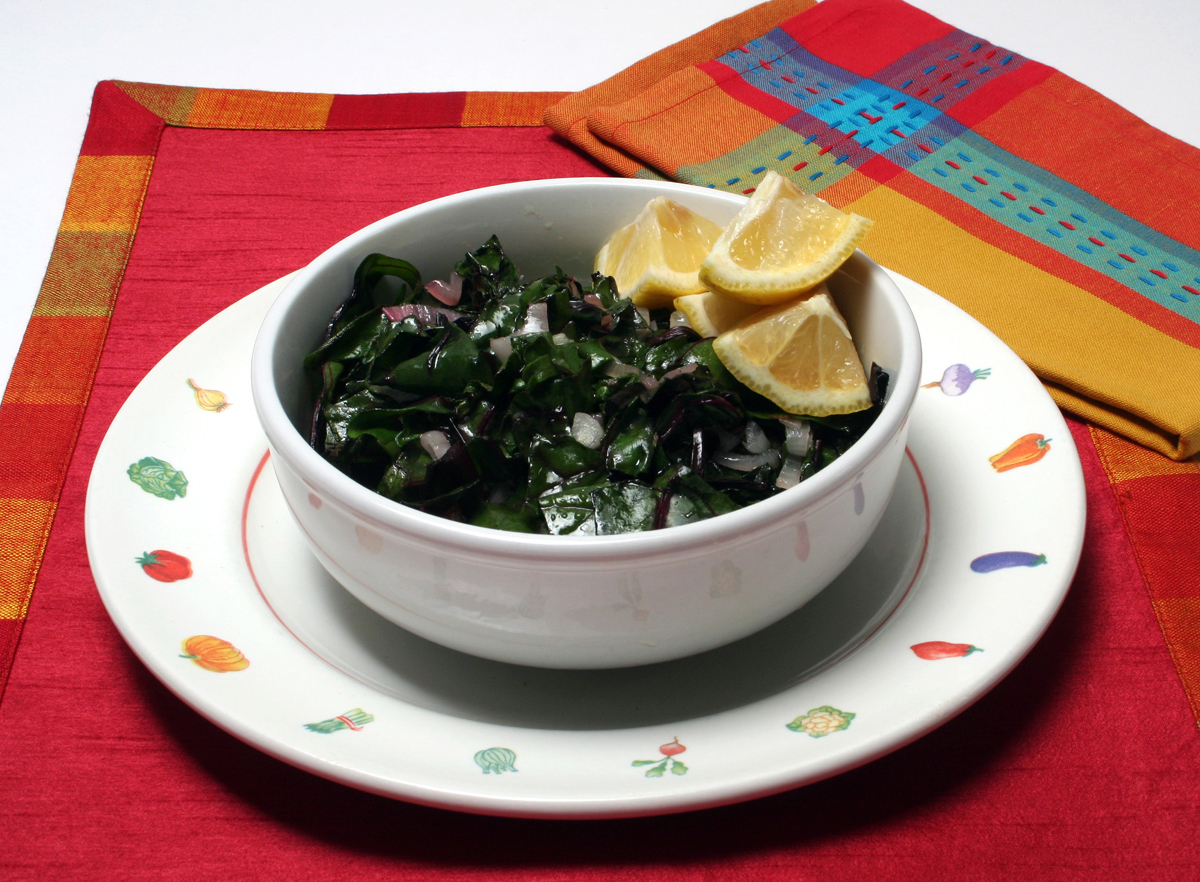Don’t call it Swiss chard. To focus on the assortment of varieties now sold at many markets, this floppy-leaved dark green is now named by the color of its stems and bold veins. The kinds with beet red, sharp yellow or rosy pink veins and stems are red chard, yellow chard and pink chard. The kind with creamy white veins and broad, flat stems that contrast graphically with its deep, dark green leaves is the one exception. It is called chard, just chard. When you see rainbow chard, it refers not to another variety but to a bunch made up of the four colorfully stemmed varieties.
Chard tastes like a more mineral version of spinach. Or, some say, like spinach crossed with beet, which makes sense because botanically chard is in the beet family. Chard with white veins and stem tastes mildest. Next in boldness come yellow and pink, with red chard having the most assertively earthy flavor. Braising, which means simmering the chard gently in just enough liquid to last until it is tender, also softens its flavor a bit.
Chard collapses so much in cooking that you need 1½ pounds to make four servings. When stemmed and de-veined, this makes a startlingly big heap of leaves. Although there is no standard for the size of a bunch of chard, to get this amount usually requires two bunches.
Some people cook chard stems. I recommend doing this separately because they take longer to cook than the leaves. The white stems are good thinly sliced and sautéed with garlic and olive oil or baked in a creamy sauce. The stems from other kinds of chard are so tough that I do not recommend using them.
To stem larger chard leaves, instead of using the method below, you may want to lay a leaf flat on your work surface and run a sharp knife down along the center vein from the tip toward the base. You then can lift out the stem, including the part where the tougher veins join it.
Red Chard with Shallots
Makes 4 servings. Per serving: 98 calories, 7 g total fat (1 g saturated fat), 8 g carbohydrate, 3 g protein, 2.5 g dietary fiber, 321 mg sodium.
Ingredients:
- 1½ lbs. red chard (2 large bunches)
- 2 Tbsp. extra virgin olive oil
- 2 large shallots (halved lengthwise and thinly sliced crosswise, 2/3 cup)
- Salt and freshly ground black pepper
- 1 large lemon (quartered)
Directions:
To stem chard, hold a leaf in one hand, grasping it near base of leaf and stem pointing up. With your other hand, close the leaf like facing pages of a book, then pull and tear leaf from stem, gradually working down along center vein to tip of leaf. Discard stems. Gather an abundant amount of chard in one hand and cut it crosswise into roughly 1-inch strips.
In heavy, large skillet, heat oil over medium-high heat. Add shallots and cook until they soften, 2 minutes, stirring constantly. Mix in chard, stirring until it collapses; it will take 3 or 4 additions to fit all chard into pan. Continue stirring until chard is dark and looks like barely cooked spinach, 4 minutes. Pour in 1/2 cup water, spread chard in even layer and cook until pan looks almost dry, 4 minutes, stirring occasionally. Add another 1/2 cup water, spread greens evenly and simmer, uncovered, until chard is tender, 10 minutes, stirring occasionally and more often toward the end. When chard is done, pan should be almost dry and little liquid should seep out when chard is gathered together. Season chard to taste with salt and pepper.
To serve, using slotted spoon, transfer chard to serving bowl. Garnish with lemon wedges. Squeeze lemon over chard after serving.
The Author:
Something Different is written by Dana Jacobi, author of 12 Best Foods Cookbook and contributor to AICR’s New American Plate Cookbook: Recipes for a Healthy Weight and a Healthy Life.
